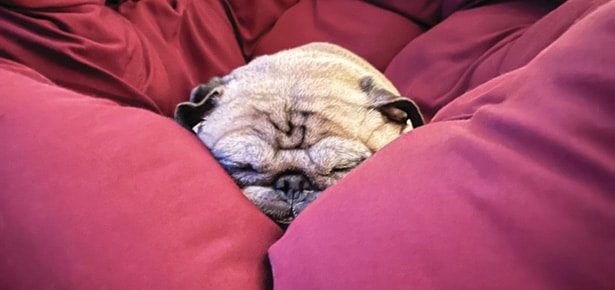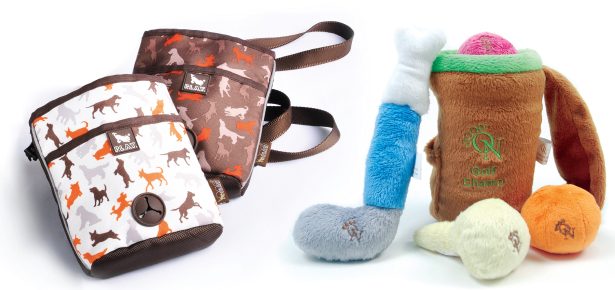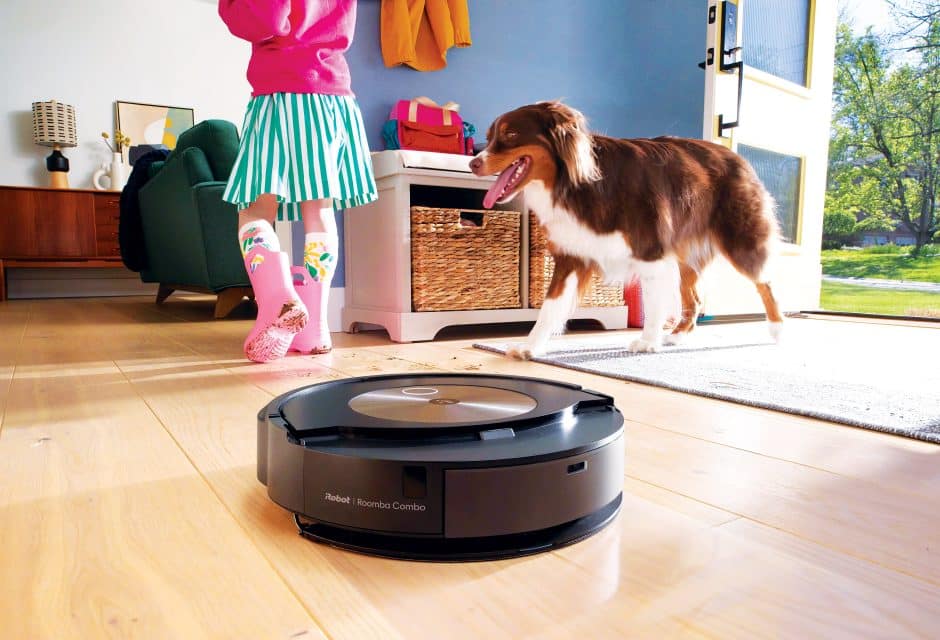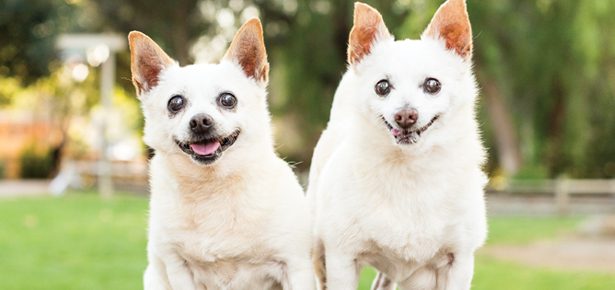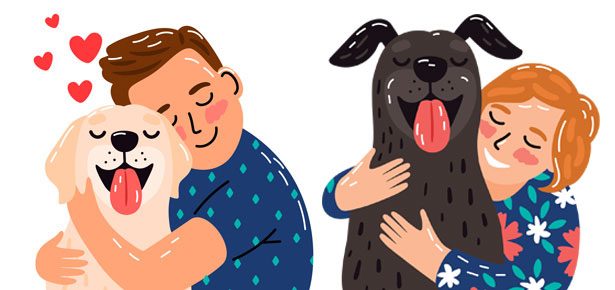

Is Your Dog a Genius?
Test Your Dog’s Memory
You only go to the vet maybe once a year for those regular check-ups and booster shots, but, sure enough, whenever you get within five blocks of the vet’s office, your dog starts whining, panting, and looking anxious. Does she really remember from year to year the exact route you drive to get there?
Most people are interested in how intelligent their dog is. While there are predictable differences based upon the dog’s breed (for example, Border Collies are a lot smarter and more trainable than Bulldogs), there is a lot of variability within each breed. This means that some Border Collies might be rather slow-thinking, while some Bulldogs might be college material. There are some well-documented tests for the general mental abilities of dogs (such as the one described in my book, The Intelligence of Dogs), and all such tests include measures of a dog’s memory.
Memory is a critical component of dog intelligence, since your dog can’t learn if she can’t remember. This makes tests of a dog’s memory a good approximation of just how bright she is in general. However, memory changes with age. Older dogs show symptoms that are similar to the memory losses found in older humans, and severe cases show memory declines similar to those found in Alzheimer’s Disease (in dogs, it is called "Canine Cognitive Dysfunction").
Whether you are merely curious about your dog’s memory ability or worried about possible memory loss in an older dog, here is a simple test that you can give your dog at home. Two conditions must be met for the test to be valid.
First, your dog (to be original, let’s call her "Lassie") must be at least a year old. It is also necessary for Lassie to have been living in the same place for at least ten weeks; otherwise the environmental memory test won’t work. You’ll need a stopwatch or a watch with a second hand, and an assistant to hold the dog is helpful.
Short-term memory
The first test looks at short-term memory. You may observe failures in your own short term memory in situations when you ask for a phone number from an operator and correctly dial it immediately, meaning that the number is stored in your short-term memory. However, when you get a busy signal and hang up to dial the number again, you often find you’ve forgotten the number, since short-term memory fades quickly.
The test requires an average-sized room that doesn’t have a lot of furniture or other material cluttering it. You need a tidbit of food that has no strong odour (otherwise, Lassie’s scenting ability will bias the results). If Lassie will not reliably sit and stay on command, have a helper present to hold her.
To start, place Lassie on a leash, and have her sit in the center of the room. While she watches you, show her the treat, then, with a great exaggerated show (but no sound), place the tidbit in a corner, making sure that she sees you put it down. Lead her out of the room, walk around in a small circle, and then bring her back to the center of the room. Leaving the room and returning to it should take no more than about fifteen seconds. Slip the leash off the dog, and start the stopwatch.
Scoring
If Lassie goes directly to the bait, score 5.
If she systematically sniffs around the edge of the room and finds the tidbit, score 4.
If she seems to search in a random fashion but nevertheless finds the tidbit within 45 seconds, score 3.
If she appears to try to find the tidbit but still hasn’t succeeded after 45 seconds, score 2.
If she makes no effort to find the bait, score 1.
Long-term memory
The next test looks at long-term memory, which is relatively permanent and long lasting. Give this test immediately after the preceding test. The set-up is identical to the short term memory test. Make sure, however, that you place the tidbit in a different corner than the one you used for the short-term memory test. Take Lassie out of the room and keep her out of the room for five minutes. Then return her to the center of the room, slip off the leash, and start the stopwatch.
Scoring
If Lassie goes directly to the bait, score 5.
If she goes to the corner where the first bait was and then quickly goes to the correct corner, score 4.
If she systematically sniffs around the edge of the room and finds the tidbit, score 3.
If she seems to search in a random fashion but still finds the tidbit within 45 seconds, score 2.
If she appears to try to find the tidbit but still hasn’t succeeded after 45 seconds, score 1.
If she makes no effort to find the bait, score 0.
Environmental memory
This next test looks at environmental memory, which simply means how well your dog remembers the world around her. While Lassie is out of the house, rearrange the furniture in a roo that is familiar to her. For example, you could bring a few additional chairs into the room, move a large piece of furniture toward the center of the room, place a coffee table in an odd corner, move a side table to the center of the room, or create several other obvious disturbances of the usual pattern of furniture placement. Try to make sure that at least five things are obviously different in the room. Then bring Lassie into the room and start your stopwatch while you stand quietly.
Scoring
If Lassie notices something is different within 15 seconds and starts to explore or sniff any changed aspect of the room, score 5.
If she notices the differences and checks out any one changed aspect of the room in 15 to 30 seconds, score 4.
If she does so in thirty to sixty seconds, score 3.
If she looks around cautiously, seems to notice something is different, but does not explore any changed aspect of the room, score 2.
If a minute passes, and she still ignores the changes, score 1.
Alternate choice memory
The final test involves alternate choice memory, or how well the dog remembers one of several possibilities. For this test, you need three identical, empty tin cans or plastic cups. Rub the inside of each with the tidbit of food that you will be using as bait, so that Lassie can’t use smell to guide her choice. Next, while she watches, show her the empty cans and arrange them in a row upside-down with about one foot (30 cm) between each. With exaggerated movements, show her the treat, then lift the middle can and place the treat under it. Slip the leash off and let her go. Whether she actually gets the treat or not by knocking over the can is irrelevant for this test, but note the attention that she pays to each can.
Scoring
If Lassie goes directly to the middle can, score 5.
If she goes to one of the outside cans first, then shifts her attention and starts nosing the middle can while ignoring the others, score 4.
If she sniffs at all three cans and then returns to pay attention to the middle can, score 3.
If she circles the cans sniffing or poking at each indiscriminately, score 2.
If she wanders around or ignores the cans, score 1.
What the score means
Add the scores from the four tests. If your dog scores 17 to 20, her memory is extremely good. Scores from 13 to 16 are above average, while 9 to 12 are average. Scores of 6 to 8 are borderline, while scores of 5 or less would place a dog in the bottom 10 percent of all dogs.
Although it is simply fun to know how good your dog’s memory is, it is also a useful thing to measure your dog’s memory when she is a healthy adult. You will then have a score to use as a reference to see if your dog’s memory is declining as she grows older.
If your dog’s memory is good, it will be easier for her to learn. If your dog’s memory is bad, it will be easier for her to forget that she was pinched or pulled by a particular child. She will also be less likely to remember that she should be still bearing a grudge against you for a late dinner or a missed walk-or that last trip to the vet. ■
Stanley Coren is Professor of Psychology at the University of British Columbia and author of several books on dogs, including The Intelligence of Dogs and How Dogs Think. His website is stanleycoren.com
Join the newsletter and never miss out on dog content again!
"*" indicates required fields
By clicking the arrow, you agree to our web Terms of Use and Privacy & Cookie Policy. Easy unsubscribe links are provided in every email.

